The dichotomy between science and religion is one of the issues that are discussed in education in the Muslim world in the modern era. This issue has been observed since civilization, when the west came to the Muslim world, and introduced modern education. Even after the west established modern schools, traditional Islamic education is still considered important. However, at the beginning of the 20th century, Islamic reformist groups emerged, who argued that the decline of the Muslim world occurred because traditional Islamic education was not concerned with science. They argue that they need to integrate religion and science.
This opinion was later spread through the Islamic revival movement that occurred in the 1970s. In 1977, Muslim scholars met at the First World Conference on Muslim Education, to discuss the problem of Islamic education in the modern era. According to them, although the issue of dichotomy in education has been discussed since the 19th century, and there have been several attempts to Islamize modern education, there has been no attempt to teach natural science and social science from the Islamic point of view. In other words, the problem of dichotomy in education still exists. They argue that to solve this problem, the Muslim world needs to integrate its education systems.
The dichotomy between religion and science described above is also seen in Indonesia. In Indonesia, after independence, two types of educational systems were formed, the Ministry of Education that governs public schools, and the Ministry of Religion Affair that governs Islamic schools. Although the Indonesian government has made efforts to minimize the differences between the two, such as modernizing Islamic education and Islamizing general education, religion and science are still taught separately.
In the early 1990s, Integrated Islamic Schools (IIS) emerged as a new type of Islamic school that sought to solve the problem of the dichotomy between science and religion. The purpose of this study is to examine the educational philosophy and practice of the integration of religious knowledge and general knowledge in IIS. Specifically, this research will focus on the “IIS Quality Standard” which describes the educational philosophy, curriculum of IIS, etc., and how schools are implementing practice based on it.
From an analysis of the “IIS Quality Standard”, the following results were found. First, by adding “IIS characteristic” containing Islamic values to each core competency in all general subjects, IIS seeks to integrate general knowledge with religious knowledge. IIS states that this is their own curriculum. This “IIS characteristic”, can be divided into eight types: 1) verse of Qur`an, 2) Sunna of the Prophet, 3) hadith, 4) stories of the companions of the Prophet, 5) fatwa, 6) introducing Muslim scientists, 7) practical wisdom, and 8) the Islamization of contents.
Second, the reason behind IIS developing its own curriculum, which integrates religious values into general subjects, is because the founders of IIS view Islam as a holistic religion. In their view, Islam is a religion that regulates various things. Therefore, everything must be interpreted with the teachings of Islam. The meaning of “integrated Islam” in IIS also contains that message. The word “integration” in IIS describes “Islam”, the religion that governs all things and not merely some. According to them, knowledge also cannot be separated from Islam. Islam has the belief that Allah is the only God and that Allah is omniscient. According to them, knowledge must be interpreted with these teachings. That is, the knowledge that Allah has is not only knowledge that is written as a revelation, but the knowledge that is implied in the natural world (which is not written as a revelation) is also a knowledge that belongs to God. (View PDF for the rest of the abstract.)
抄録全体を表示
